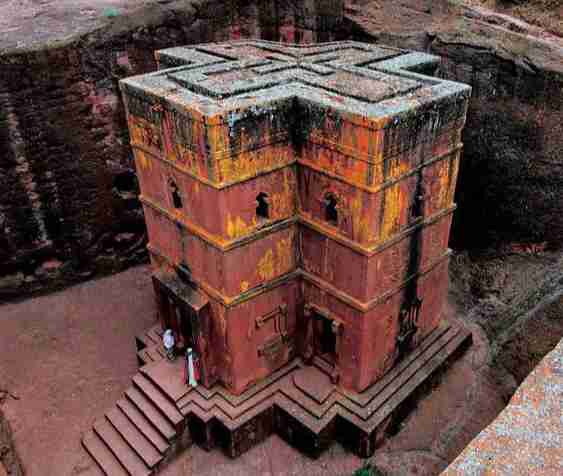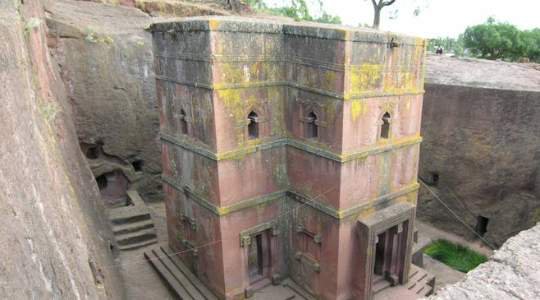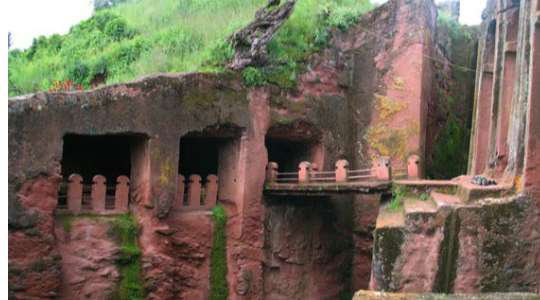A city named, Lalibela, is known as a place for healing psychological ailments. The Lord created medicine out of the Earth and the sensible will not despise them. Was not water made sweet by a tree so that its power might be known?
And he gave skills to human beings that he may be glorified in his marvelous works. By them the physician heals and takes away pain; the pharmacist makes a mixture from them. God’s works will ever be finished, and from him, health spreads all over the Earth.” – An excerpt from the Book of Sirach.
During the reign of Gebre Mesqel Lalibela, a member of the Zagwe dynasty who ruled Ethiopia in the late 12th century and early 13th century, th
e current town of Lalibela was known as Roha.
The saint-king was named because a swarm of bees is said to have surrounded him at his birth, which his mother took as a sign of his future r
eign as emperor of Ethiopia.
The names of several places in the modern town and the general layout of the rock-cut churches themselves are said to mimic names and patterns observed by Lalibela during the time he spent as a youth in Jerusalem and the Holy Land. Lalibela, revered as a saint, is said to have seen Jerusalem, and then attempted to build a new Jerusalem as his capital in response to the capture of old Jerusalem by Muslims in 1187.
Each church was carved from a single piece of rock to symbolize spirituality and humility. Christian faith inspires many features with Biblical
names – even Lalibela’s river is known as the River Jordan. Lalibela remained the capital of Ethiopia from the late 12th into the 13th century.
According to the Futuh al-Habaša of Sihab ad-Din Ahmad, Ahmad ibn Ibrahim al-Ghazi burned one of the churches of Lalibela during his invasion of Ethiopia. However, Richard Pankhurst has expressed his skepticism about this event, pointing out that although Sihab ad-Din Ahmad provides a detailed description of a rock-hewn church (“It was carved out of the mountain.
Its pillars were likewise cut from the mountain.”, only one church is mentioned; Pankhurst adds that “what is special about Lalibela, (as every tourist knows), is that it is the site of eleven or so rock churches, not just one – and they are all wit
hin more or less a stone’s throw of each other!
Lalibela is regarded as the Christian capital of Ethiopia because she is home to Bilbila Kirqos, Bilbila Giorgis, and Beta Ammanuel; three major ancient Ethiopian spiritual centers that do not only haven for the holy bees whose Holy Honey are reported to possess healing properties used for remedying physical and psychological ailment alike.
But is also Lalibela’s major tourist attraction sites that draw persons from all walks of life who mainly come to experience the churches and partake in the Holy Honey ritual.


























